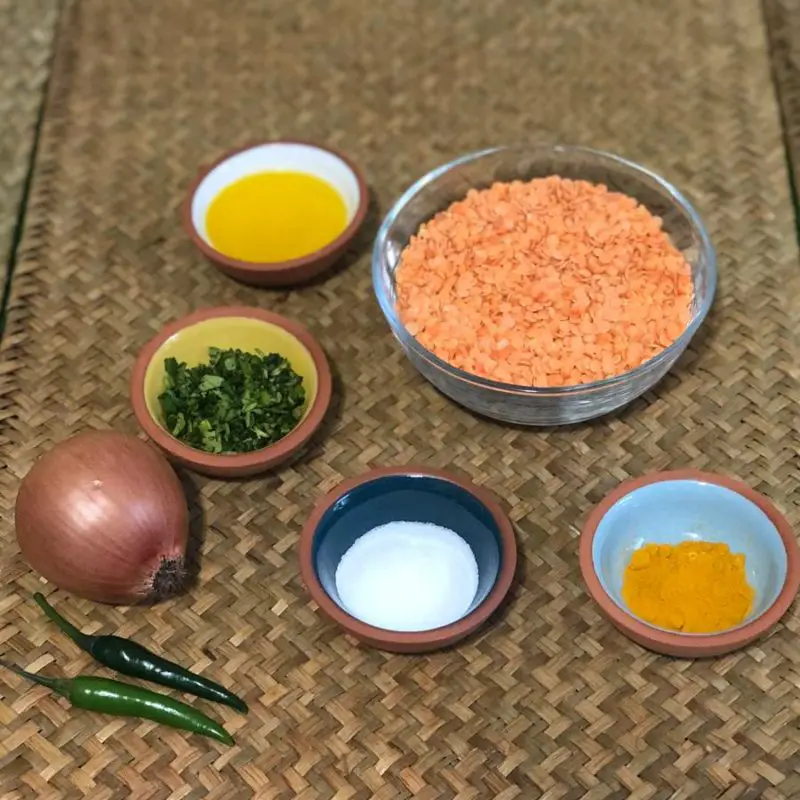For a healthy and plant-based diet, lentils can be a good addition. Lentils are small beans that are high in protein and fiber, are simple to prepare, and have a great earthy taste that complements a variety of recipes. Continue reading to learn my preferred way to cook lentils. This write-up also includes information on different types and my favorite lentil dishes.
What exactly are lentils?
Lentils are one of the world’s oldest food crops. Lentils, like chickpeas, beans, and peas, are legumes – plants with an edible seed wrapped by a protective outer layer. Lentils are a staple component in South Asia (especially India), West Asia, and the Mediterranean, and are available with or without the protective seed covering. These tiny beans are a useful source of organic protein since they’re inexpensive, flexible, and have a long shelf life.
Dried lentils are a nutritious powerhouse, with almost 25% protein content, giving them some of the greatest plant-based protein sources. Not just that, but lentils are high in vitamins and minerals such as magnesium, calcium, potassium, zinc, and phosphorus, as well as the crucial amino acid lysine. Lentils, according to Harvard, also contain resistant starch, which is digested slowly, delaying carbohydrate absorption and therefore lowering blood sugar.
Lentils are very similar to rice. If you get them correctly, they may be the workhorse of your dried foods cabinet. If you get them wrong, you’ll end up with a mushy mush that’s as disgusting as that wilted bag of greens, sitting in your fridge for three days or longer.
The best thing about lentils is that they are a highly adaptable, inexpensive, and delicious substitute for meat. Serve on its own, in a salad, with your favorite pasta sauce, or in soups, chilis, and stews.
You may not realize it, but lentils are edible seeds from the legume family. As a result, they’re a favorite with plant-based eaters looking to hit their macros. They’re also high in micronutrients, such as calcium, iron, phosphorus, and vitamin B, to mention a few.
Let’s talk about how to cook lentils properly.
Random fact: depending on the type of lentil you choose, you may only require 15 minutes of boiling time. That’s almost as fast as spaghetti.
There are also a variety of lentils on the market, ranging from the more popularly recognized green and brown cooked lentils to the faster and softer yellow and red split cooked lentils, which are usually used in dahls.
Varieties of Lentils
There are almost dozen of variations of lentils. However, just a few are widely available in most grocery shops. They can differ widely in terms of flavor and texture, so be sure you choose the proper ones for your daily requirements.
Brown lentils:
This is the most common type; you may purchase them at the grocery labeled simply as “lentils.” They have the mildest flavor of all lentils, making them the most flexible.
Red lentils:
Red lentils, also known as split lentils, are more orange than red in color. They cook quickly and can become mushy due to the loss of their seed shell. This feature makes them suitable for soups or stews.
Green lentils:
Green lentils have quite a shiny appearance and somewhat rougher texture than red lentils. They keep their form well and are thus perfect for salads.
Black lentils:
These little lentils have a deep, earthy flavor and resemble caviar. They’re ideal for salads since they keep their form rather well.
Yellow lentils:
A classic in Middle Eastern cuisines, yellow lentils cook quickly and can get mushy, so keep them for stews and soups.
How to Store Lentils
Dried lentils can be kept for up to a year in an airtight container. Cooked lentils can be preserved for up to five days in an airtight container.
Are lentils Nutritious?
When cooked properly, the seeds are nutritional powerhouses as well as delicious. ‘Lentils are high in vitamins, protein, and fiber,’ says Hope. ‘They may unquestionably be regarded as a component of a healthy, well-balanced diet.
Why, you might ask? As Hope says, “Lentils provide a source of plant-based protein, plant-based iron, and B-vitamins, all of which are essential for maintaining appropriate nutrition.”
Ingredients
- 1 cup Red Lentils/ daal
- 2 tbsp coriander leaves chopped (cilantro)
- 2 tbsp onion chopped
- 2 whole green chili peppers
- 1-2 tbsp mustard oil
- 1 tsp tumeric
- salt to taste
- 2 cup water

Instructions
- Rinse the lentils
- Warm up the mustard oil in the pan until hot then add the chopped onions
- When the onions begin to turn a little brown, add the turmeric. Stir, then add the lentils and fry for 2-3 minutes
- Add the whole green chilies and 2 cups of water to the pan and let boil for up to 30 minutes. Stir, cover and simmer until the water has evaporated and the lentils are cooked
- Sprinkle the chopped coriander leaves on top
- Leave to cool for 5 minutes
- Serve with boiled rice or chapati
Nutrition








